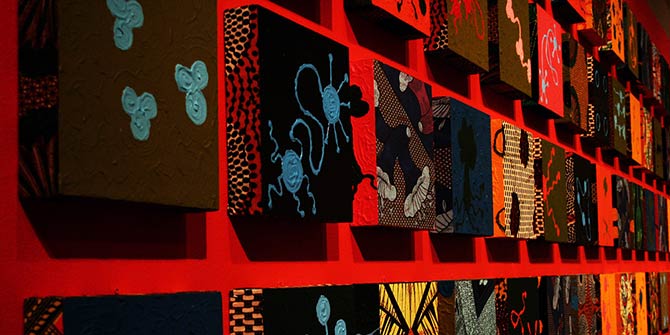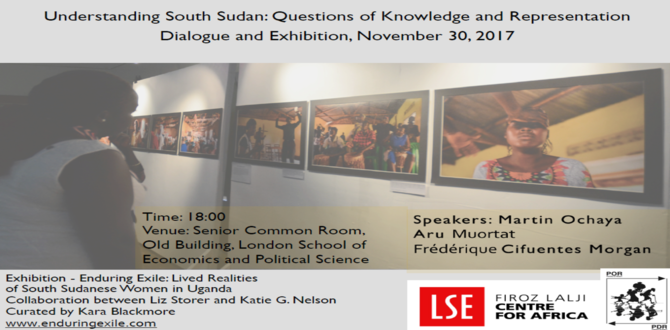Ahead of the annual Biko Lecture Europe at LSE on Thursday 23 October, we take a brief look at the role of music in the apartheid struggle.
2014 is a special year for South Africa. It marks 20 years of democracy in the country. While this landmark has prompted much soul-searching about what progress has been achieved during the intervening period, it has also been an opportunity to relive the long struggle against apartheid.
Music, or freedom songs as they were called, played a prominent role in this struggle and it was the subject of the wonderful 2002 documentary, Amandla! A Revolution in Four Part Harmony.
Henry Verwoerd, often described as the architect of apartheid, was one target of freedom songs. Although racial segregation had existed in South Africa since colonial times, it was in 1948 that it became institutionalised as apartheid when Verwoerd was Minister of Native Affairs. Naturally, the song Watch out Verwoerd encapsulated the loathing felt towards the man responsible for stripping Africans of even basic human rights.
“When you really really wanted to make the whites mad, you sang Watch out Verwoerd because you were almost daring them,” one former activist related in the documentary, Amandla! A Revolution in Four Part Harmony.
This song was written by Vusiyile Mini who was considered the greatest writer of freedom songs in South African History. He was incredibly prolific, and is described as producing a new song almost every week.
Mini was also a political activist and was arrested with two fellow African National Congress (ANC) comrades in 1963. Their subsequent death sentence triggered an international outcry, which ultimately failed in its objective. However, he and his comrades refused to go quietly.
Ben Turok, another ANC member was in prison at that time and recalls Mini’s last night before his execution,
“The last evening was devastatingly sad as the heroic occupants of the death cells communicated to the prison in gentle melancholy song that their end was near… It was late at night when the singing ceased, and the prison fell into uneasy silence. I was already awake when the singing began again in the early morning. Once again the excruciatingly beautiful music floated through the barred windows, echoing round the brick exercise yard, losing itself in the vast prison yards.
And then, unexpectedly, the voice of Vuyisile Mini came roaring down the hushed passages. Evidently standing on a stool, with his face reaching up to a barred vent in his cell, his unmistakable bass voice was enunciating his final message in Xhosa to the world he was leaving. In a voice charged with emotion but stubbornly defiant he spoke of the struggle waged by the African National Congress and of his absolute conviction of the victory to come. And then it was Khayinga’s turn, followed by Mkaba, as they too defied all prison rules to shout out their valedictions. Soon after, I heard the door of their cell being opened. Murmuring voices reached my straining ears, and then the three martyrs broke into a final poignant melody which seemed to fill the whole prison with sound and then gradually faded away into the distant depths of the condemned section.”
Contrary to what one would expect from songs telling of injustice and suffering, the music of that era was often uplifting like Watch Out Verwoerd and Meadowlands or intensely soothing like Nkosi sikelele which became the alternative anthem for the people.
However, by the 1970s, the people came to the conclusion that armed resistance was the necessary route to freedom. The change in attitude was reflected in the music of the time. It was evident not just in the tune, but also in lyrics such as “arresting us, killing us, won’t work. We’ll still fight for our land,” and “we will shoot them with our machine guns.”
In fact, music became much more than simply expressing defiance, it was also a way of finding peace within oneself in what were truly difficult times.
“The feeling was that when people had died, if you mourned them for too long, it demoralises your spirit,” freedom fighter Lindiwe Zulu explained in Amandla! A Revolution in Four Part Harmony.
“As a result, even when we used to bury some of our comrades who had been ambushed on the way, we never used to cry, we used to sing.”
By the 1980s, the anti-apartheid movement had become a global phenomenon. Back home, the South African youth developed a new form of protest – a combination of song and dance called the toyi-toyi. It featured stomping of the feet accompanied by spontaneous chanting.
One activist said, “We had no guns, no weapons, so the toyi toyi became our weapon.”
In an article in Cape Town magazine, writer Lisa Nevitt described the impact of the toyi-toyi, “The toyi-toyi is quite a marvel to watch. Throngs of people would charge forwards, stomping and chanting political slogans. Such energy struck fear into the hearts of the armed forces who tried to contain them. But toyi-toyi was also a distraction from fear during the marches because people knew that later, once the crowds had dispersed, they would suffer harassment at the hands of police.”
Globally-acclaimed musicians also became figureheads in the struggle against apartheid. The likes of Miriam Makeba and Hugh Masekela were exiled from their homeland because of their musical expressions of the suffering in their homeland. In fact, singing one of their songs could lead to arrest and jail.
For these musicians however, it was only natural that their music reflected their life experience which included the anguish associated with living in a repressive society.
For example, the Masekela song Stimela was inspired by people taking the train to Johannesburg to work. “It became a symbol of your parent or loved one leaving. The train was South Africa’s first tragedy,” Masekela said.
Masekela also relates how he once received a birthday message from Nelson Mandela while living in Botswana in the 1980s. He was so moved to have this encouraging message that he composed the song, Bring Back Nelson Mandela which became the anthem of the global anti-apartheid movement. This movement finally achieved its goal on 11 February 1990 when 27 years of incarceration came to an end. In 1994, Nelson Mandela became the country’s first democratic President.
Twenty years after South Africa’s first democratic elections, it is certainly right that the role of music and the arts in the apartheid struggle is celebrated. This will be done on Thursday 23 October when the internationally celebrated South African trumpeter, flugelhornist, cornetist, composer, singer and activist Hugh Masekela delivers the annual Biko Lecture Europe at the London School of Economics and Political Science. This event is unticketed and open to all.






1 Comments